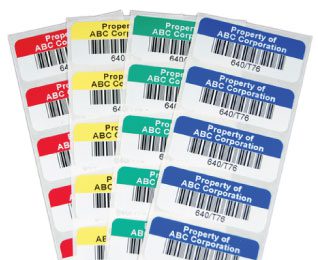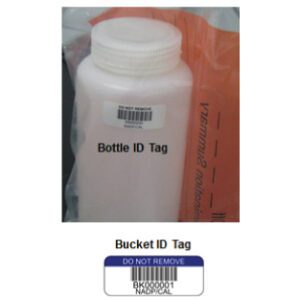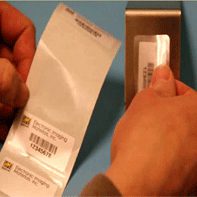Color Coding labels for easy Identification

The visual search task is a common chore that humans engage in every day. Humans initially employed visual search to ensure survival. Our color vision has evolved in order to facilitate visual search. That is why color coding programs have been used so often in applications that involve visual searching, alerting others or attracting attention. Research shows that color is more effective than other stimulus options as a coding dimension in visual search tasks.
What—you may inquire—does this have to do with my job? We’re glad you asked. Color coding is extremely useful if there is a need to distinguish between specific items or different types of labels (e.g., document labels versus warehouse bin labels) or between different copies of the same label (e.g. blue for the sales, green for shipping, pink for accounting). Colors provide the user with a visual clue that works faster than text alone. An experienced user of a color-coding system instantly recognizes the significance of a certain color. Check out our not-super-scientific experiment here!
Here are some things to keep in mind:
- The color-coding schema should be simple, logical and easy to remember. The colors selected should be limited to a few distinct shades. Each particular color should have the same meaning throughout the process.
- As a general rule, pastel-colored labels are better to use if you are adding barcodes because they will scan easier and will reproduce better if photocopied. The ability to scan (primary consideration) and legibility of any photocopies (secondary consideration) should be verified prior to making the final color selection.
- Color-coding should never be used as the sole means of identifying the label. Written information with a barcode and/or human-readable text and numbers should also appear on the labels.

The benefits of efficient, accurate labeling can extend to a sophisticated array of applications. Effective labeling can involve risk management, legal compliance, maintaining privacy, and safeguarding information as well as convenience and employee productivity. Without accurate labeling, there may be dire ramifications. The retrieval of a color-coded item or document mitigates the risk of unwelcome business situations. Employees find exactly what they need and only what they need to perform their jobs.
Practical Benefits of Color Coding:
- Ability to prioritize work
- Speed storage and retrieval time
- Reduce the risk of lost items
- Increase employee accuracy, efficiency and productivity
- Boost employee peace-of-mind and job satisfaction
- Lessen operational downtime
Practical Uses of Color Coding:
- Product Identification – Examples: Tools, file folders, nursery plants
- Work Processes – Examples: Laboratory tests, manufacturing systems
- Location Labeling – Examples: Rack and bin labels, interdepartmental communications, entertainment venues
- Safety Warnings – Examples: Electrical wires and cables, patient wristbands
So Many Flavors! Choose A Color That Will Suit Your Palate!!
Thanks to new technologies, you can get labels and tags flood coated (aka tinted) or printed any color of the rainbow. Bold color bars, special characters and graphics can be added. You can pick your colors or we can select them for you to guarantee they will be barcode-scannable. Call The Label Experts to start color coding ASAP!




